Angela Wrightson killers: A friendship that ended in murder
- Published

The two girls are pictured returning to Angela Wrightson's home in the early hours of 9 December, where they would continue the attack
For two young teenagers the night of 8 December 2014 began like many others. But by the next morning the two girls would be murderers, having taken their time to batter a vulnerable woman to death with a variety of weapons. The attack lasted for seven hours.
Then aged 13 and 14, the pair spent the early evening roaming the streets of Hartlepool drinking strong cider, smoking pilfered cigarettes, and taking selfies. Despite the drinking and drug-taking - the older girl had also taken illicit prescription medicine - they were not atypical teenagers.
They frequently posted on Facebook, declaring love and eternal friendship to a multitude of friends. They liked clothes, makeup, and styling their hair.
In court, much was made of a message sent about five weeks before the murder, where the younger girl referred to the older as her "partner in crime" and proclaimed: "We will be with each other through thick and thin."
Was it a harbinger of what was to happen? Or phrases people - especially excitable teenagers - use?
Failures revealed over Angela Wrightson murder
Can children be natural born killers?
Teenage girls sentenced for torture killing
The chaotic life and brutal death of Angela Wrightson
There was no indication the two of them would launch such a brutal attack. The judge, Lord Justice Globe, warned the jury to bear in mind the younger girl had no history of violence. While the older girl had lashed out at staff at a care home, she also had no history of causing or attempting to cause serious harm.
The pair were not off the radar, hidden away in an abusive family home. They were both in the care of the local authority. Children's Services knew about them. They had support workers, foster carers, and were catered for at special educational centres. The older girl had a mental health team and had received therapy and suggestions on how to manage her anger.
There have been reports in the media that the girls frequently "escaped" from their care homes. But there was no question of "escape". They weren't locked up, they'd done nothing to suggest they should be.
Both were allowed to visit friends in the evening, and foster parents and support workers would drive them into town and collect them afterwards.
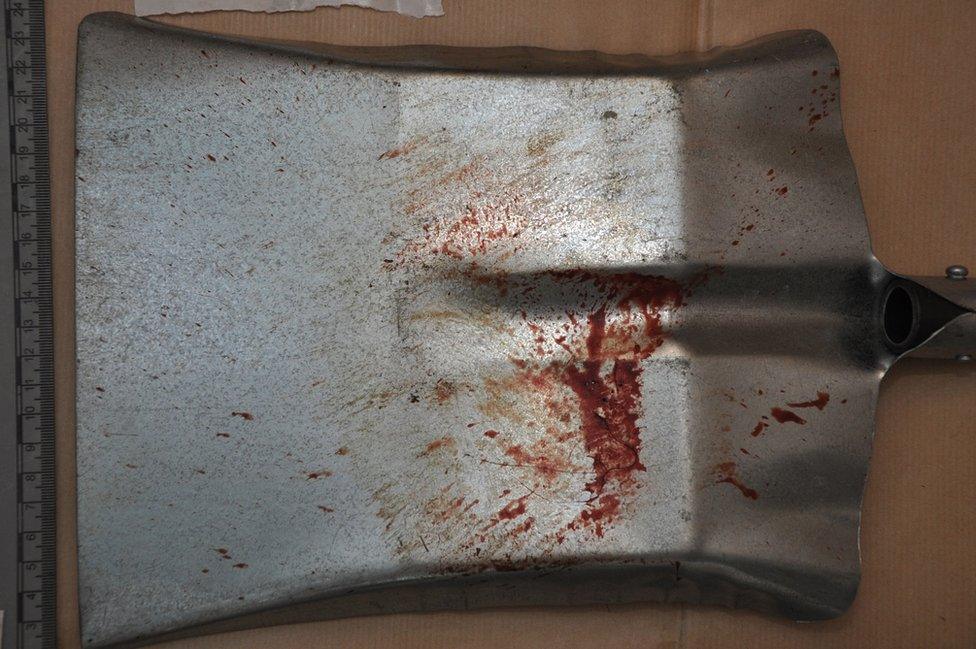
A blood-stained shovel was found next to Angela Wrightson
They had known each other since early childhood but weren't especially close until a few months before the murder. They enjoyed hanging around with each other - the younger girl said the older was "fun" and "not boring" and they met up "every other day".
The younger girl was interested in a couple of boys and would "inbox" them, as she called it. The older enjoyed rap music but also liked One Direction. They were both fans of Cheryl Fernandez-Versini and their favourite song was I Don't Care.
The friendship was not encouraged by either girls' carers. Each family thought the other girl encouraged theirs to go missing. But they were from the same part of Hartlepool and naturally gravitated towards each other, and to the Stephen Street area, where both had family.
It was not a particularly intense relationship. Both named a handful of other girls as their closest friends. Both would go missing, get drunk, smoke and stay out late - with or without each other.
Angela Wrightson was a vulnerable alcoholic who lived in Stephen Street. Her house was known locally as a place where underage drinkers could hang out. Both girls had been there before and Ms Wrightson would buy the alcohol for them.
However, that night, some terrible alchemy led to a brutal, bloody and sustained attack, culminating in murder.
Ms Wrightson was left dead - having been tortured with a variety of weapons over a prolonged period.
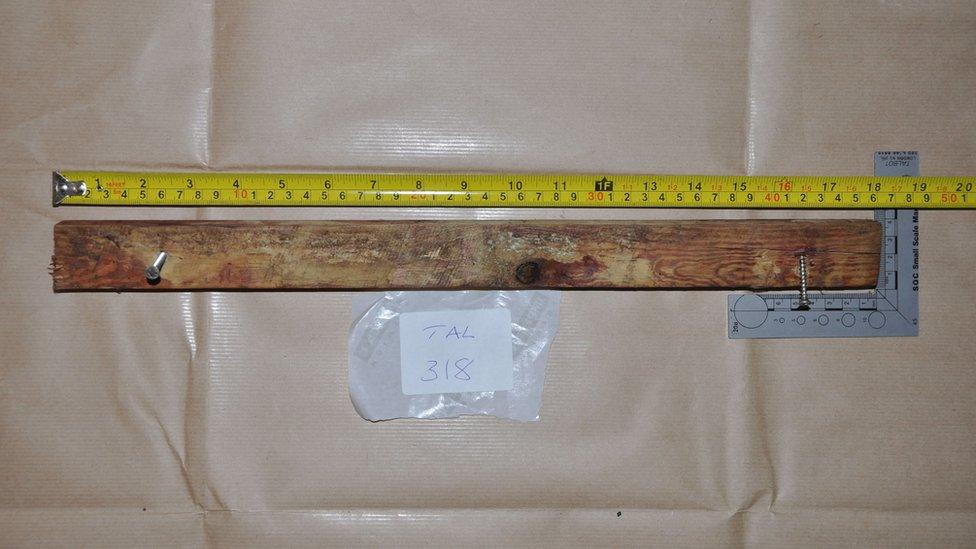
A wooden batten with protruding screws at either end was also used to attack Angela Wrightson
How had this happened? Other cases of children who have killed in pairs shed little light on this case. The most notorious, the Bulger killers Jon Venables and Robert Thompson, had set out to abduct and murder a child.
It was accepted by all parties in court that Ms Wrightson's murderers did not set out that evening to harm anyone, let alone kill them.
No-one really knows what happened inside 14 Stephen Street that night. The older girl, drunk and high on prescription drugs, said she had passed out several times, or had fallen asleep. The younger claimed not to remember.
Although not pre-meditated, the murder wasn't a one-off explosion of rage. The length of time the girls spent battering Ms Wrightson, the fact they had several breaks to sit around and drink and smoke, the way they chose weapons from around the house - and perhaps most damningly, the fact they had a two-hour break when they visited a friend before returning to 14 Stephen Street to carry on with their attack - scuppered any defence based on a lack of control.

One of the items used to attack Angela Wrightson was a television, which was dropped on her head. Blood and hair were recovered from its surface
The girls left 39-year-old Ms Wrightson surrounded by broken furniture and blood-stained implements, and covered in shards of broken glass. She had hundreds of injuries, was naked from the waist down, and had bled out over the sofa on which she had been placed. Some of the crime scene photographs were deemed by the judge in the murder trial as too distressing for the jury to see.
Bloodied handprints were smeared on the walls, and blood was also found on the ceiling.
Throughout the evening the girls posed for selfies, which were Snapchatted to friends. Some pictures showed Ms Wrightson looking distressed in the background. Others didn't show Ms Wrightson, although she was there. It's likely she was already seriously injured, bleeding on the floor, while the teenagers drank, smoked and danced around to music.
Dr Elizabeth Yardley, associate professor of criminology at Birmingham City University, says the girls' use of social media suggested they did not care about the consequences.
"For many young people, social media is a 'performance of self'," she says. "They use it to tell stories about their lives in real time. Young people are generally quite savvy when it comes to what is and isn't appropriate to post on social media - they know that pictures of illegal activity will have consequences.
"The actions of these girls suggests that they did not care about the consequences, or were simply not thinking about them, as their values about what is right and wrong are significantly off kilter," Dr Yardley adds.
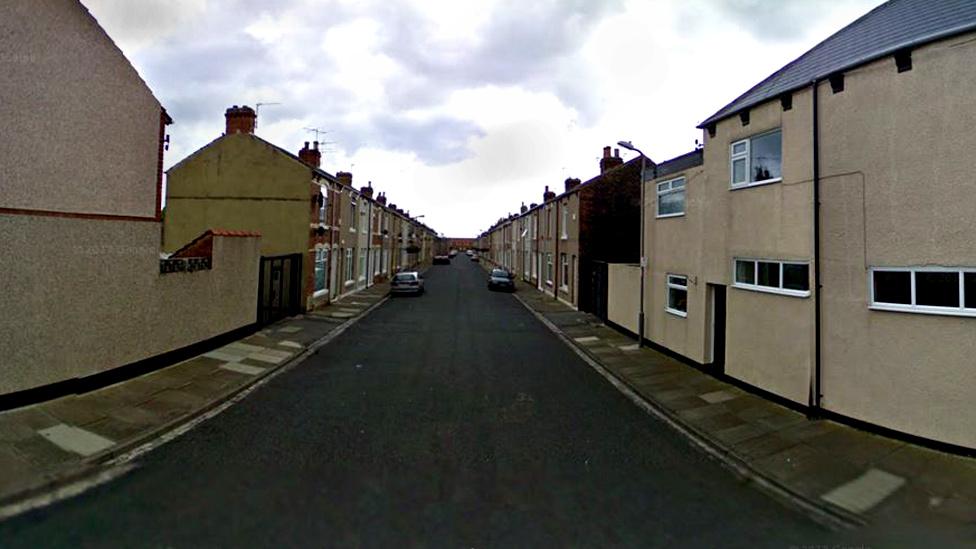
More than a quarter of occupied households on Stephen Street are categorised as "economically inactive"
The younger girl repeatedly told the jury "she didn't remember" what had happened the night Ms Wrightson was murdered. She told the police "she hadn't known what was going on," claiming she was on Facebook on her phone while the other girl smashed up the living room and hurled tables, a television and a printer at Ms Wrightson.
She said she hadn't noticed when Ms Wrightson was beaten with a stick studded with screws, or slashed across the head with broken glass, or had a mirror slammed over her face. Despite her claimed amnesia, it was pointed out in court, she had remarkable recall for remembering her co-accused was to blame.
If one of the pair was the more dominant, it was the younger girl.
Repeatedly telling the older girl to "kick her head in" and complaining "why isn't [Ms Wrightson] knocked out yet?" the younger girl sat and smoked and even spoke to a friend on the phone while orchestrating the attack.
Her friend heard her say: "Go on... kill her. Bray her."
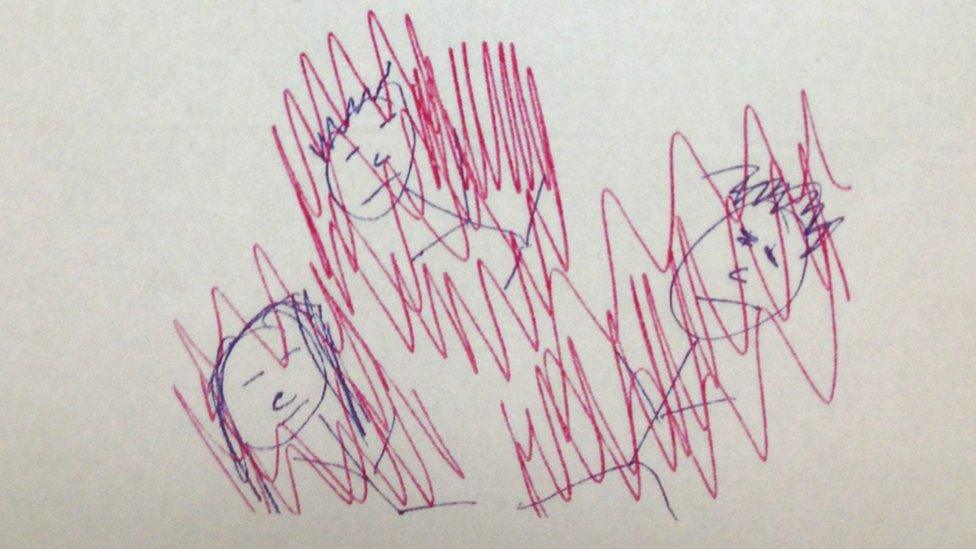
The older girl was advised by carers to try to channel her anger through drawing
The younger girl had been bored that night and had left another friend's house because they'd started bickering. She'd tried to arrange to meet up with a number of people, tried to organise a "session" or party.
After their arrest and throughout the trial, the younger girl tried to push the blame on to the older one.
Despite being the younger of the two, she is much bigger than her friend, tall and heavily built. She had a relatively stable home life. An only child, her parents are married and her father works as a delivery driver.
When she was about 12 she began having serious arguments with her mother and started to go missing. On several occasions public appeals were put out by police.
A respite arrangement was worked out, where she would stay with a foster carer for a few nights a week. This became full-time, but she was always in touch with her family. Her mother in particular would emphasise the importance of making sure she went back to the foster home on time, and behaved herself.
Like the older girl, she was not at mainstream school, but was at an off-site educational centre. One of her support workers described her as "a bright girl".
Both of her parents were at the court; her mother turned up every day for the seven-week trial, her father most days. They left the room - her mother in tears - when the girls were found guilty of murder.
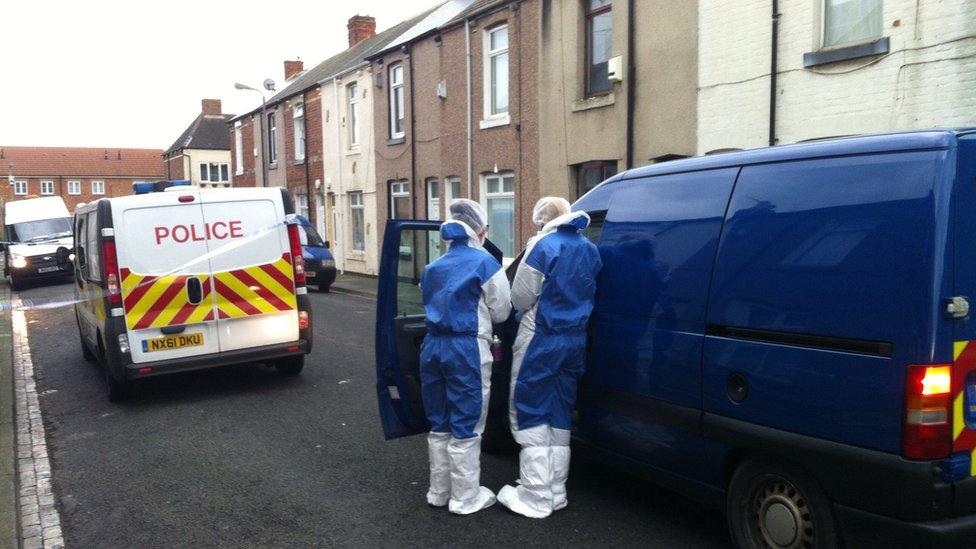
Angela Wrightson's body was discovered by her landlord
The older girl is slight, pretty, and looks younger than her age. In many ways she is is childlike. She has a very low IQ of between 60 and 70, and believed a person could not die from anything other than "being stabbed in the heart, shot in the head, or cancer".
When asked in court for her date of birth, she didn't know what the phrase meant. When it was altered to "when is your birthday?" she had no idea.
When she was arrested for murder she didn't understand why - just as she didn't understand why staff at a children's home told her off for lighting cigarettes from an electric toaster.
She looked up to her accomplice, saying the younger girl "acted older than her". In many ways the older girl was at the younger's beck and call - it was she who would demand they go out at night, would demand her Facebook password, would tell her to hold her coat for her.
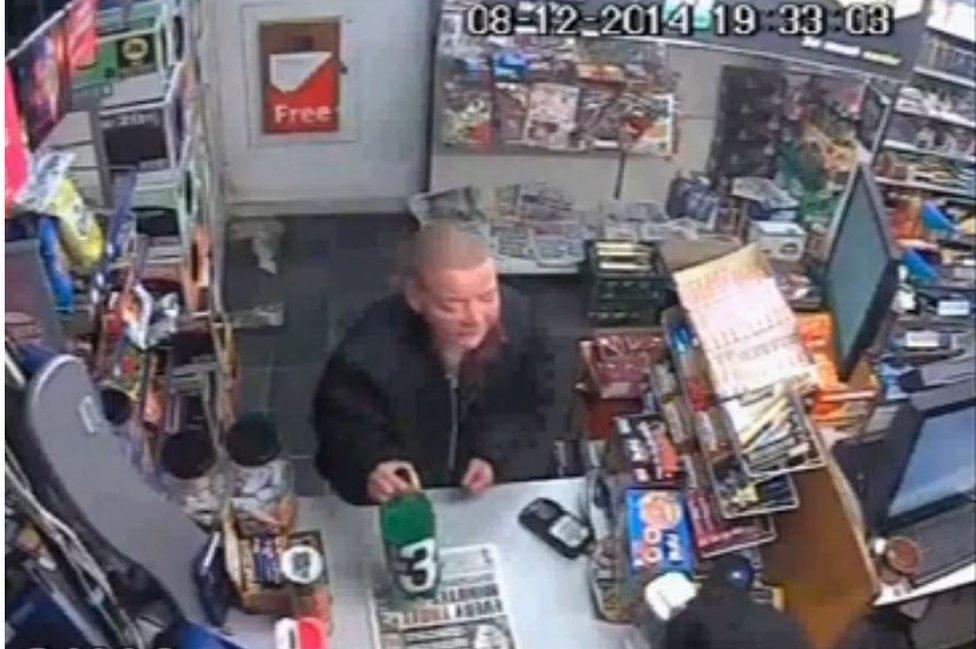
Angela Wrightson is pictured on CCTV buying 3 Hammers cider at her local shop at about 19:30. Shortly afterwards she returned to her home for the final time
The older girl had a troubled and disorganised upbringing, living in turn with her mother, father, and at a number of foster homes. She was too unsettled to cope in mainstream school and was sent to a pupil referral unit.
At the trial, one of her support workers told the court the older girl "was the most volatile person" she had ever worked with.
The court heard she had a history of self-harming, using anything with a sharp edge to slash not just her arms and legs but even her face. She was also known to have smashed her own head into walls.
The day she murdered Ms Wrightson, she visited her mother who told her to kill herself.
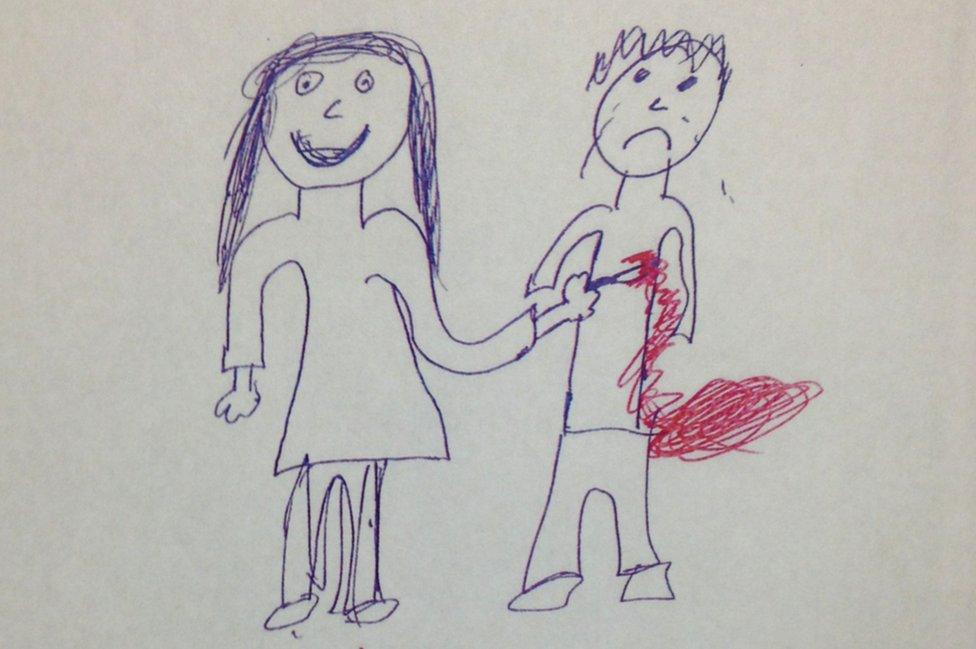
The older girl was encouraged to use drawing as a way to channel her anger. This picture was found in her room after her arrest - she had drawn it several weeks beforehand
During the trial she tried to kill herself a number of times - including one attempt in the court's toilets between sessions of giving evidence.
When answering questions posed by the barristers at the trial, she was matter-of-fact - the tone of her voice similar to someone reading aloud a shopping list.
"I kicked Angie in the head and face. About seven times, I think. Then [the younger girl] told me to kick her again, so I kicked her some more in the belly and head and face".
She has five sisters with different fathers. Three of them are in jail - one for stabbing her mother and rupturing her spleen with a golf club.
The fact violence was an everyday occurrence in her life "trivialised" it, psychiatrists agree. She saw people attacked - but they didn't die, which may have fed into her notion that beatings don't kill.
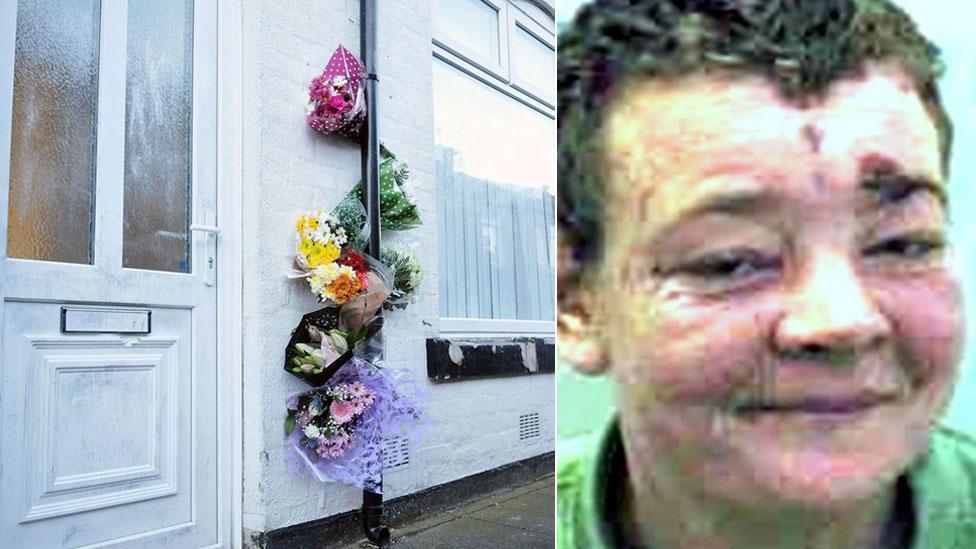
After Angela Wrightson's death, local people left flowers at the door of the house where she was killed. She is pictured on the right, aged 34
She both witnessed and experienced domestic violence, being taken to A&E 24 times for different injuries. She had her fingers broken by her mother, who suffered from severe psychiatric illness and had been sectioned under the Mental Health Act.
The sisters were taught from a young age there was a ghost in the family home. The girl told the court her mother started giving her illicit prescription drugs - such as amphetamines, Tramadol and codeine - when she was about 11, and bought her strong cider at the same age.
Since the night of the murder the girl has hallucinated, waking up sweating and screaming, seeing blood on the walls. She hears the phantom laughter of young girls and thinks men are shouting at her through air vents in the ceiling, and through the shower head.

Both girls were from the industrial coastal town of Hartlepool
Dr Yardley points out: "Most of us gain an understanding of mainstream norms and values from our parents and families - we learn what is right and wrong and how to behave in particular circumstances in a socially appropriate and law abiding way.
"Children in care tend to come from backgrounds that prominently feature instability, abuse, violence and neglect. Having experienced a lack of control during their early childhoods, they will have an intense need to wrestle some control back later in their lives.
"In some cases, they will be drawing upon what they have learned from their home environments. They may see mum being hit by dad, mum drinking herself into oblivion - and see this as normal.
"Therefore they have a script or a framework, in which they learn how to react to particular events through observing what goes on around them.
"So for some children, they will learn that when they don't get what they want, they should react by physically attacking someone".
Neither of the older girl's parents attended her trial.

The younger girl took a photo of the older in the back of the police van on their way home, and sent it to friends
It seems that she maintained her loyalty to the younger girl, who was quick to jettison the friendship.
A letter written by the older girl to the younger was intercepted by staff at one of the secure units where the girls were held.
The paper, covered with a childish scrawl and littered with drawings of hearts exhorted her friend to "keep your chin up".
"Have missed you so much you know. I can't believe this has happened. I'm proper trashed.
"Whatever happens and however long we get, just keep your chin up bonny lass. I'm thinking of you every step of the way. Do our time, get out and start a new life.
"Wait until we get out, me and you on the sesh again but this time it will be bigger and better, I'm telling you."
However, following the brutal murder they committed, it's unlikely the girls will ever be allowed to see each other again.
Related topics
- Published6 April 2016
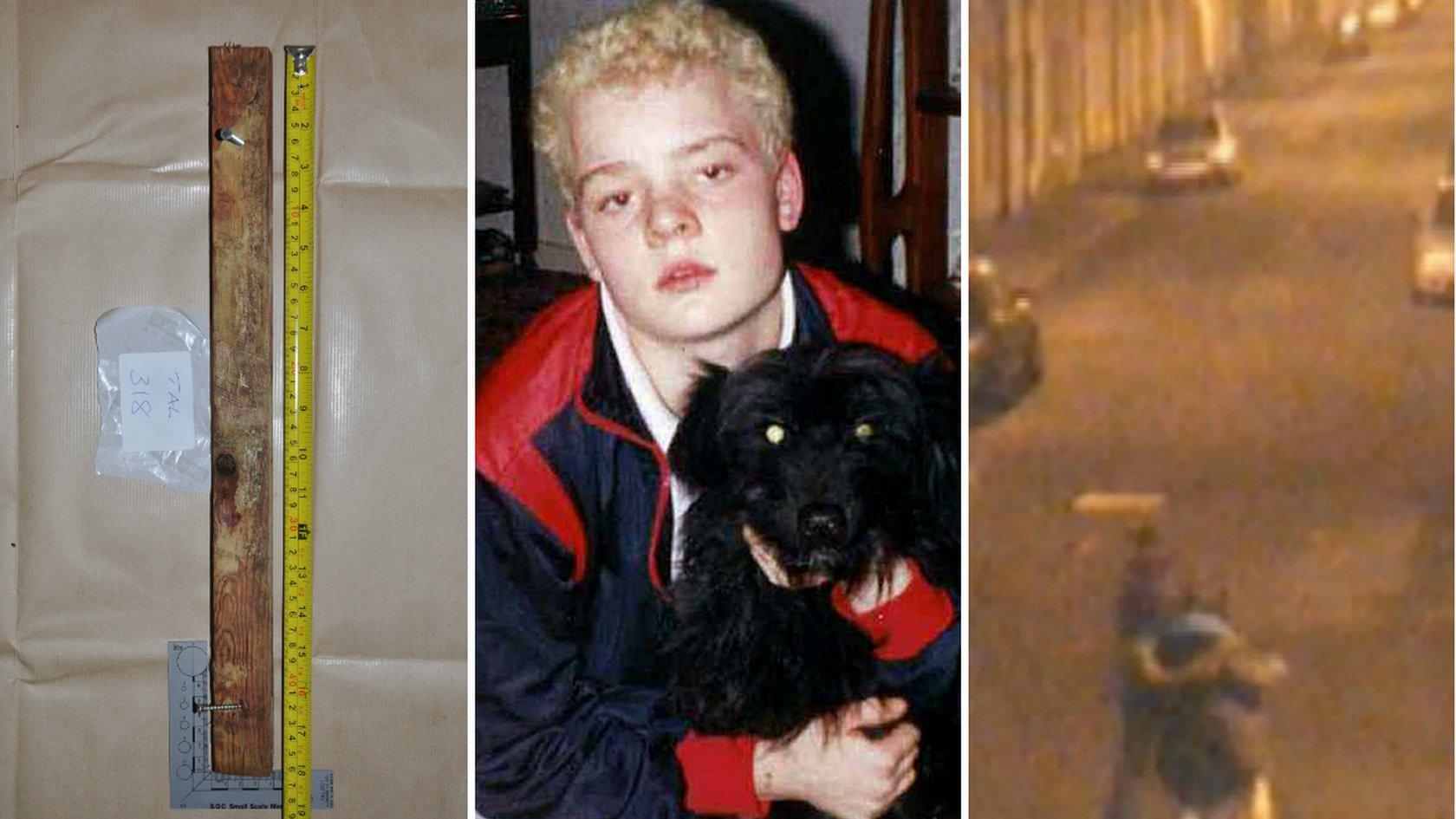
- Published5 April 2016
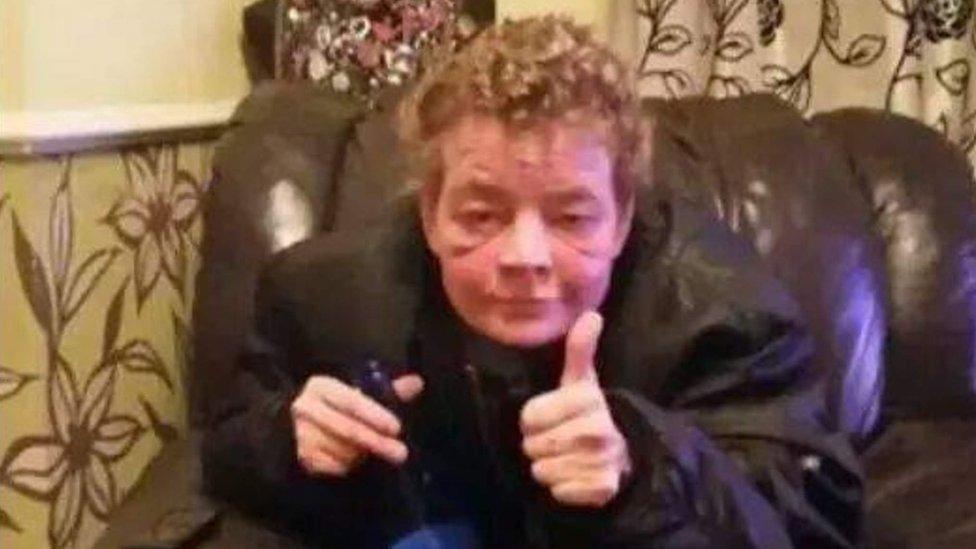
- Published7 April 2016
